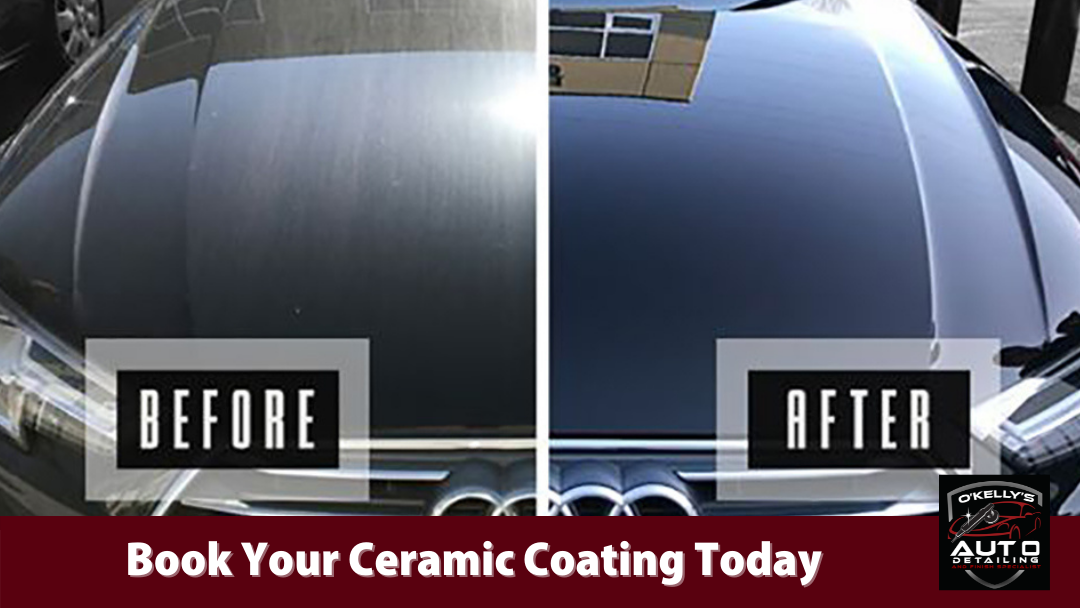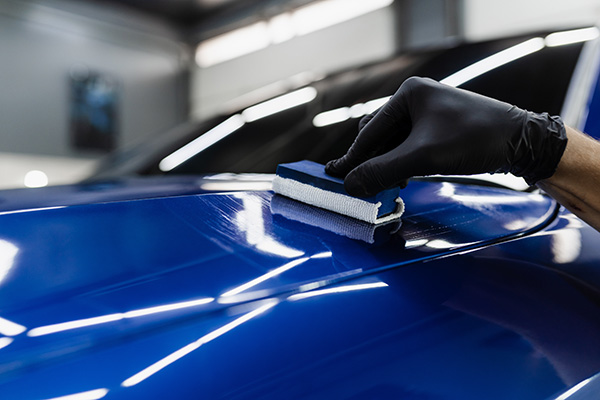The ultimate innovation of car paint protection is here with ceramic coating.
Just How Ceramic Covering Shields Your Cars and truck's Paint and Maintains It Looking New
Ceramic finishing has actually arised as a noticeable solution for vehicle paint protection, supplying a robust defense versus a variety of environmental risks. The intricacies of how this technology functions and its advantages over standard techniques necessitate a closer examination, revealing compelling factors to consider this ingenious strategy for your car.
What Is Ceramic Layer?
Ceramic coating is regularly concerned as a revolutionary development in automobile paint protection. ceramic coating. This innovative product is a liquid polymer that chemically bonds with the vehicle's manufacturing facility paint, creating a safety layer that boosts sturdiness and visual charm. Unlike conventional wax or sealers, which give only momentary defense, ceramic finishes offer resilient results, often spanning a number of years with appropriate upkeep
The primary components of ceramic coatings are silicon dioxide (SiO2) and titanium dioxide (TiO2), which add to their hydrophobic buildings. This hydrophobic nature permits water to grain and roll off the surface area, effectively preventing pollutants like dirt, grime, and bird droppings from adhering to the paint. Lorries treated with ceramic coverings require much less constant cleaning and are simpler to keep.
In addition, ceramic coatings give UV security, which helps protect against oxidation and fading of the paint because of sun exposure. This element not just preserves the car's visual allure yet additionally adds to its resale value in time. In general, ceramic coverings represent a substantial leap onward in the realm of vehicle treatment, supplying a durable remedy for lorry proprietors looking for to maintain their financial investment.
How Ceramic Covering Functions
Ceramic layer is composed of a fluid polymer that chemically bonds with the manufacturing facility paint of a car (ceramic coating). The primary part of ceramic coatings is silica dioxide (SiO ₂), which gives premium firmness and strength versus scratches, UV rays, and various other external impurities.
When used appropriately, the layer penetrates the microscopic pores of the paint surface area, developing a semi-permanent bond. This results in a smooth, glossy surface that boosts the automobile's aesthetic appeal while at the same time fending off water, dust, and gunk. The hydrophobic nature of the layer makes sure that impurities glide off quickly, lowering the regularity of cleaning and the chance of scrapes throughout cleansing.

Benefits of Ceramic Coating
The application of ceramic layer provides many advantages that considerably enhance the security and look of a vehicle's paint. One of the primary benefits is its ability to create a robust, hydrophobic layer that pushes back water, dust, and other contaminants. This residential or commercial property not just keeps the surface cleaner for longer durations yet also makes cleaning the lorry simpler and less labor-intensive.
In addition, ceramic layers give superior defense versus damaging UV rays, which can lead to oxidation and fading gradually. ceramic coating. This UV resistance helps preserve the initial color go to my blog and gloss of the vehicle's paint, thus protecting its visual allure for years
Additionally, ceramic layers are chemically immune, providing security versus acidic pollutants such as bird droppings, tree sap, and road gunk. This resistance assists prevent etching and discoloration, which can compromise the stability of the paint.
Lastly, the resilience of ceramic coatings extends beyond standard waxes and sealants, often lasting a number of years with correct upkeep. This long-lasting security eventually converts right into price financial savings, as vehicle proprietors can minimize the frequency of reapplication and maintenance efforts. On the whole, ceramic finishings stand for a substantial investment in car treatment.
Comparing Ceramic Coating to Standard Approaches
Typically forgotten in the pursuit for optimum vehicle defense, the contrast between ceramic layer and typical methods such as waxing and sealants reveals substantial distinctions in durability, performance, and maintenance. Traditional waxes usually offer a brief protective layer, often lasting just a couple of weeks to a pair of months, while sealants can prolong this period to a number of months. On the other hand, ceramic finishings offer a robust, long-lasting shield that can sustain for a number of years when appropriately used.
In regards to efficiency, ceramic coverings exhibit premium hydrophobic residential or commercial properties, efficiently warding off water and impurities, which avoids dirt and crud from sticking to the surface area. This residential property not only enhances the vehicle's look yet likewise simplifies the cleaning procedure. Traditional waxes and sealers, while they might supply some water resistance, do not match the degree of security given by ceramic finishes.
The maintenance regimen for both choices deviates substantially. While conventional techniques need regular click resources reapplication and upkeep, ceramic layers are made to endure the roughness of day-to-day driving with very little treatment, making them a much more reliable option for vehicle fanatics seeking lasting security. Ultimately, the choice between ceramic finishing and traditional methods depends upon the wanted degree of defense and maintenance commitment.
Maintenance Tips for Ceramic Coated Cars
Maintaining a ceramic layered automobile calls for a critical technique to make sure the long life of the safety layer. Routine cleaning is essential. Utilize a pH-neutral shampoo and microfiber wash mitts to avoid scratching the finishing while efficiently removing dirt and contaminants. Aim to wash your vehicle every two weeks, or more regularly in harsh conditions.
Furthermore, avoid automated car cleans that make use of brushes, as these can jeopardize the stability of the ceramic coating. Rather, opt for a touchless wash or a hand wash. After washing, drying out is crucial; use a top notch try this microfiber towel to stop water areas.
Using a ceramic-specific upkeep spray can boost the finish's hydrophobic properties and include an additional layer of security. This need to be done regularly, depending upon your driving conditions.

Final Thought
In verdict, ceramic finishing serves as an efficient safety measure for vehicle paint, providing a durable obstacle against ecological damages and boosting the vehicle's aesthetic charm. Embracing ceramic coating innovation can considerably extend the lifespan of an automobile's outside, guaranteeing it remains aesthetically attractive and well-protected.